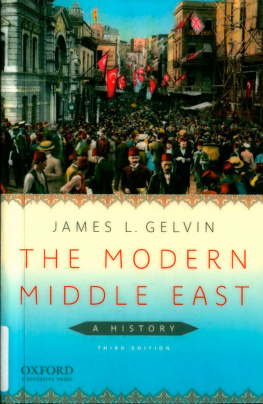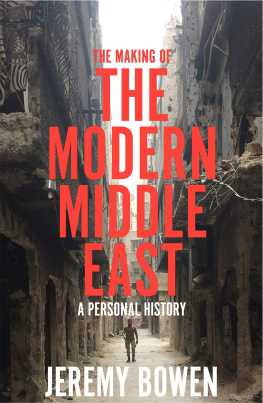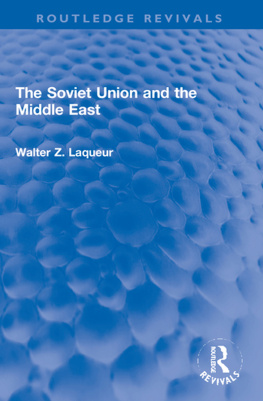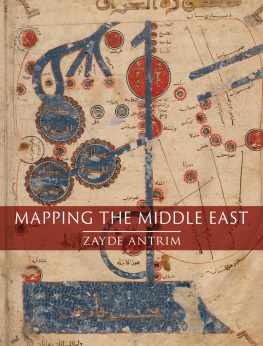Gelvin evokes a fascinating tale of the intersection of the forces of progress, reformation, revolution, and imperialism that have collectively defined the modern Middle East. His cogent and crisply written history now sets the standard for serious surveys of the region.
USSAMA MAKDISI
Rice University
By far the most engaging survey of the modern Middle East that I have read in a long time... clearly written, often humorous, accessible to students and non-specialists, and theoretically sophisticated.
DINA RIZK KHOURY
George Washington University
An important and much-needed conceptual approach to the modern history of the Middle East.
EDMUND TERRY BURKE III
University of California, Santa Cruz
Newly revised and updated for the second decade of the twenty-first century, the third edition of The Modern Middle East: A History explores how the forces associated with global modernity have shaped the social, economic, cultural, and political life in the region over the course of the past 500 years. Beginning with the first glimmerings of the current international state and economic systems in the sixteenth century, this book examines the impact of imperial and imperialist legacies, the great nineteenth-century transformation, cultural continuities and upheavals, international diplomacy, economic booms and busts, the emergence of authoritarian regimes, and the current challenges to those regimes on everyday life in an area of vital concern to us all.
Engagingly written, drawing from the author's own research and other studies, and stocked with maps and photographs, original documents, and an abundance of supplementary materials, The Modern Middle East. A History, Third Edition, will provide both novices and specialists with fresh insights into the events that have shaped history and the debates about them that have absorbed historians
NEW TO THIS EDITION
The Introduction and Parts III and IV have been extensively revised and updated
Chapter 20, on political Islam, has been entirely rewritten
New vignettes and document selections have been added to the text
A new, expanded, photo essay, along with new photographs, have also been added
ABOUT THE AUTHOR
James L. Gelvin is Professor of History at the University of California, Los Angeles. An award-winning teacher, he is the author of The Israel-Palestine Conflict: One Hundred Years of War (2005, 2007), Divided Loyalties: Nationalism and Mass Politics in Syria at the Close of Empire (1998), and numerous shorter works.
ISBN 978-0-19-976605-5
OXFORD
UNIVERSITY PRESS www.oup.com/us/he
ACKNOWLEDGMENTS
Every book is a group effort, mine no less than anyone else's. I would therefore like to use this space to thank those whose assistance has been invaluable to me. First off, there are my former professors, particularly J. C. Hurewitz at Columbia and Zachary Lockman at Harvard, who showed me how it should be done. As the old saying goes, we stand on the shoulders of giants. Others gave direct encouragement, argued, offered advice and solace, and pointed out missteps: Najwa Al-Qattan, David Dean Commins, Michael Cooperson, Howard Eissenstat, Katherine E. Fleming, Carol Hakim, Dina Rizk Khoury, Roya Klaidman, Ussama Makdisi, Karla Mallette, Chase Robinson, and Stefan Weber. Special thanks go to William L. Cleveland, a true gentleman and friend, and to Teo Ruiz at UCLA and Helen Sader at the American University of Beirut, who provided me with the time and support necessary to write this book. T. M. Rollins of the Teaching Company inspired me to begin this project; Bruce D. Borland took an early interest in the manuscript and sold Oxford University Press on the idea; and Peter Coveney, my initial editor at Oxford University Press, saw the first edition of this book through to publication, with the assistance of his committed staff. Many of the photographs in this book came from the private collection of Wolf-Dieter Lemke of the Orient-Institut der Deutschen Morgenlndischen Gesellschaft in Beirut and the Fondation Arabe pour l'image, also in Beirut. I am grateful to Sara Scalenghe for apprising me of the latter resource, and Tamara Sawiya for walking me through its extensive collection.
Finally, there are the students I taught at Harvard University; Boston College; Massachusetts Institute of Technology; the University of California, Los Angeles; and the American University of Beirut who, over the years, forced me to distill the narrative and rethink many of the issues raised in this book. It is to them that I dedicate it
ADDENDUM FOR 3RD EDITION
It has been almost eight years since I wrote the acknowledgments that you, a member of an obviously devoted (but select) group, have just read. In the intervening period, I have had time to rethink some of the arguments I made in the previous two editions of the book and to correct what I generously referred to as missteps in the first paragraph of my earlier acknowledgments. I have been assisted in this process by a number of friends, colleagues, and students, some of whom I know well, some of whom are e-mail acquaintances. Among them are Joel Beinin, Ian Belcher, Matthew S. Hopper, Fred Lawson, Issam Nassar, William B. Quandt, Sarah Shields, and the reviewers for the third edition: Farid Al-Salim, Kansas State University; Tom Ewing, Virginia Tech; Roberto Mazza, Western Illinois University; James Meyer, Montana State University; Shane Minkin, Swarthmore College; and Tamir Sorek, University of Florida. To all of them I extend my gratitude. An author has no better friend than a careful reader.
A NOTE ON TRANSLITERATION
In this book I have tried to keep the number of foreign words particularly words borrowed from Arabic, Persian, and Turkish to a minimum. To a large degree I think I have succeeded, although, to paraphrase Sigmund Freud, sometimes a timar is just a timar. Although Arabic in particular contains sounds that do not exist in English (and vice versa), most words readers will confront should pose no problems in terms of pronunciation.
There are two sounds, however, that are represented in English by symbols that will appear strange to the average reader: the hamza (represented by ) and the ayn (represented by ). The hamza designates what linguists call a glottal stop, the sort of sound one associates with Cockney English, as in "alio, guvner!" Thus, when used in the middle of a word, it indicates a breaking off, then a resumption of sound. The ayn is a sound produced when the muscles of the throat are constricted as a vowel is pronounced. While it may be difficult for someone who does not speak Arabic to hear the difference between amal and amal, for example, the absence of the ayn in the latter word alters its meaning significantly, transforming work into hope.
NEW TO THIS EDITION
The Introduction and Parts III and IV have been extensively revised and updated.
Chapter 20, Political Islam, has been entirely rewritten.
Three new vignettes are included: What God Hath Wrought (Chapter 5), Stranger Than Fiction (Part III), and From Basra, Iraq to Mecca, California (Chapter 17).
The Photo Essay has been entirely revamped and expanded.
Additional photos have been added to the text.
Two new document selections, from Evliya Chelebi: Seyahatanam, are provided in Part I.
The Suggested Readings sections of Parts II and IV have been revised.
The Timeline has been revised and updated.
INTRODUCTION
Next page





